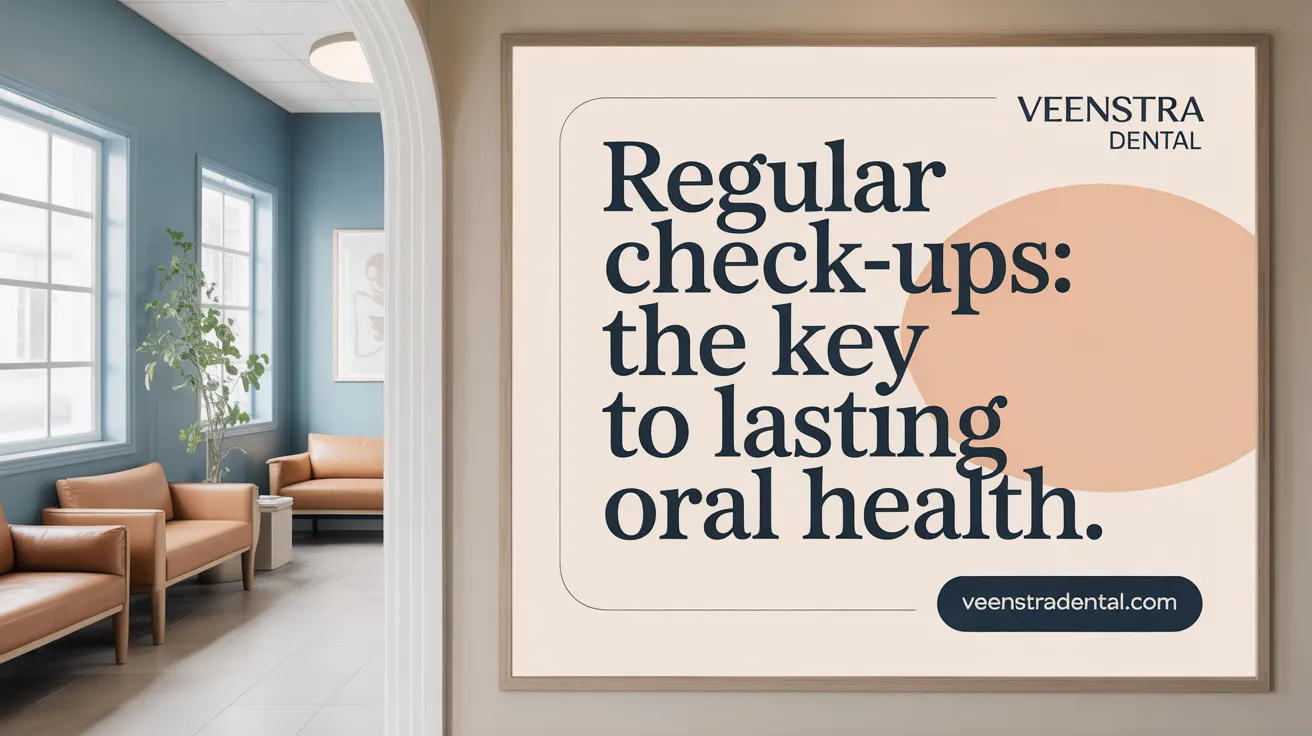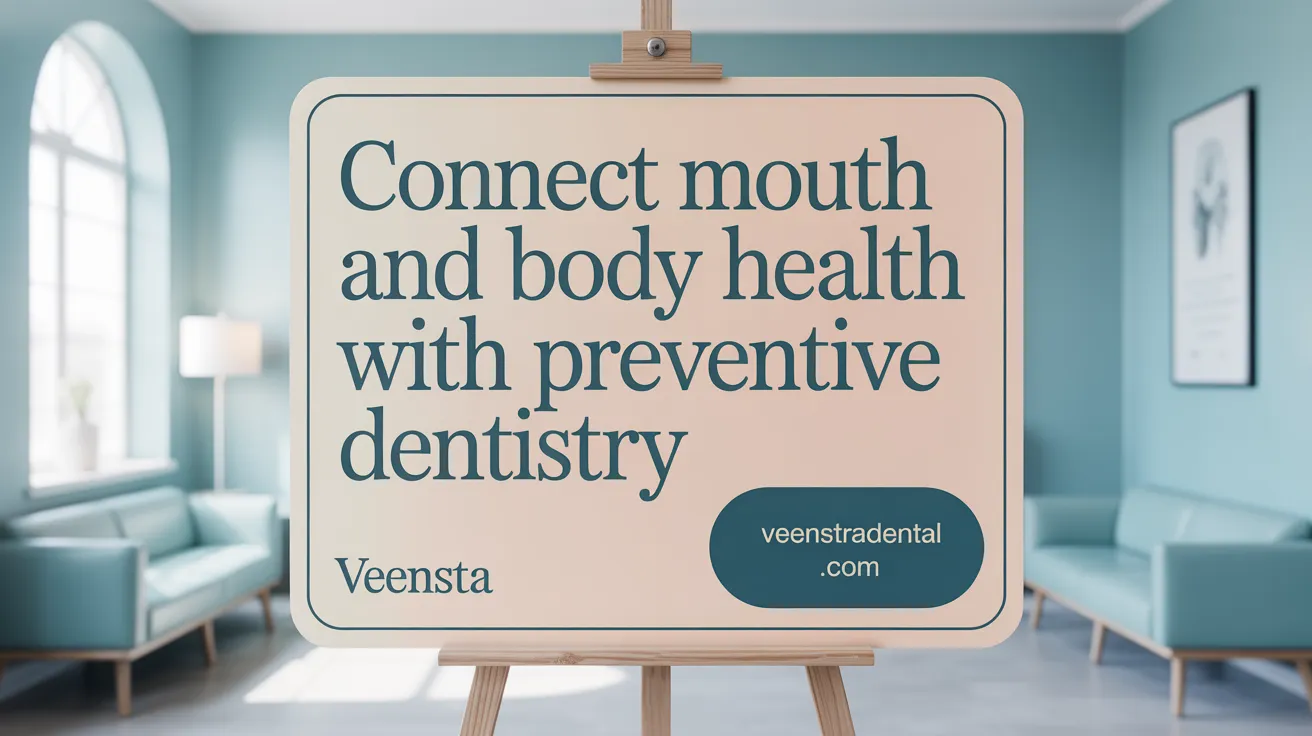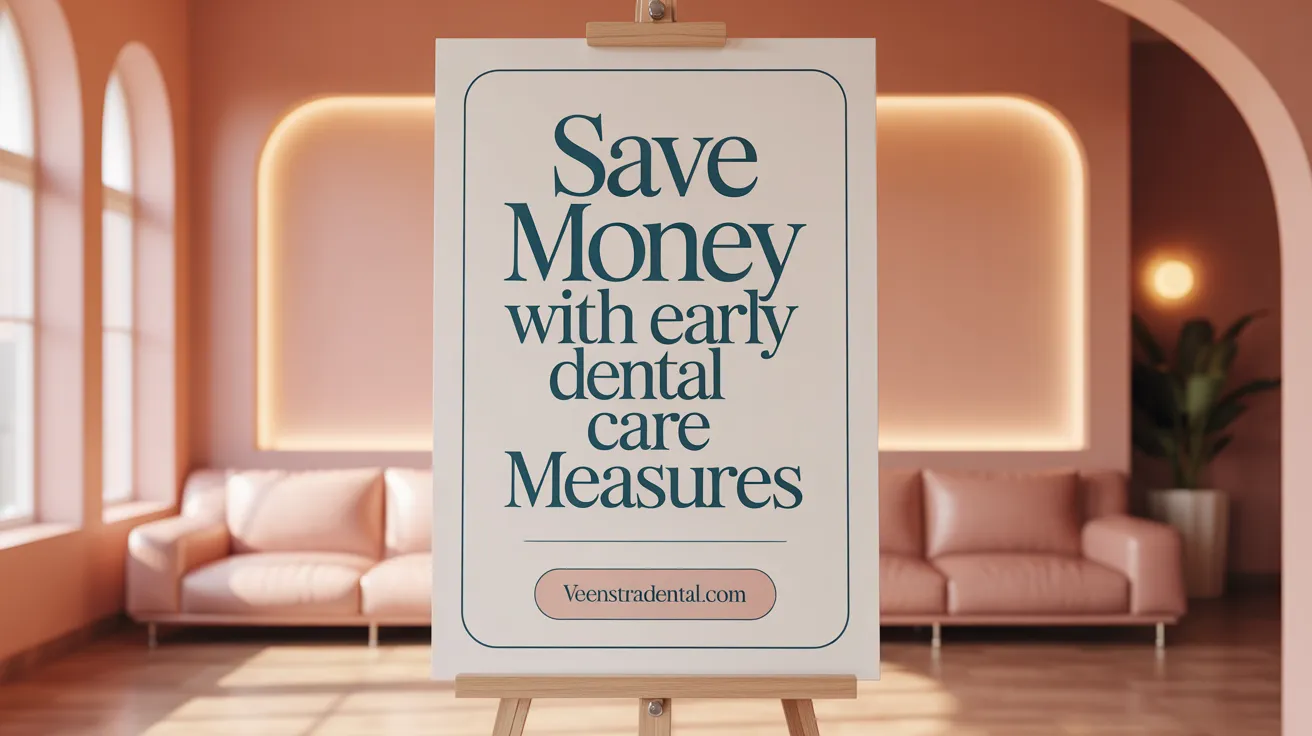Understanding Preventive Dentistry
Preventive dentistry focuses on maintaining oral health through regular care and healthy habits that prevent dental diseases such as tooth decay and gum disease. This article explores how routine dental care safeguards teeth, promotes overall health, and reduces costly treatments throughout life.
The Foundations of Preventive Dental Care
What is preventive dentistry and what services does it include?
Preventive dentistry is a branch of dental care focused on maintaining oral health and preventing issues such as tooth decay and gum disease. Its approach includes regular oral exams every six months, professional cleanings to remove plaque and tartar, routine X-rays to detect hidden problems early, fluoride treatments that strengthen tooth enamel, and dental sealants that shield teeth from decay.
When should preventive dental care begin?
Preventive dental care should begin early, ideally as soon as a child's first tooth comes in. Starting dental visits and healthy oral habits at this stage helps establish a strong foundation for a lifetime of good oral health (source).
Why is starting early dental habits important?
Developing preventive habits early reduces the risk of cavities and gum issues throughout life. Children adopting brushing, flossing, and regular dental visits tend to have lower instances of untreated cavities and are less likely to suffer complications associated with poor oral health (source).
Who provides preventive dental care?
Dental professionals including general dentists and pediatric dentists play a crucial role in preventive care. They perform exams, cleanings, apply fluoride and sealants, and provide guidance on effective oral hygiene practices tailored to individual needs, ensuring comprehensive preventive support from childhood through adulthood (source).
Routine Dental Visits: A Cornerstone of Oral Health

How often should one visit the dentist for preventive care?
Dental experts advise scheduling dental check-ups at least twice yearly for most people. Those with heightened risk factors such as frequent cavities or gum disease might need more frequent appointments to ensure optimal oral health.
What happens during a routine dental check-up?
A routine dental visit generally includes several key components. First, dental hygienists perform professional cleaning to remove accumulated plaque and tartar that daily brushing cannot eliminate. This cleaning helps prevent cavities and gum disease.
Next, the dentist conducts a thorough oral exam, assessing teeth, gums, and other soft tissues. Dental X-rays may be taken to reveal issues like hidden cavities, bone loss, or infections not visible during the exam. The dentist also evaluates gum health and performs an oral cancer screening by checking for lumps, red or white patches, and other abnormalities.
Finally, personalized advice is provided based on the patient’s oral health status, including tips on brushing, flossing, diet, and any additional preventive strategies.
What are the benefits of professional cleaning during dental visits?
Professional cleanings remove plaque and hardened tartar that can’t be removed by brushing alone. This cleaning helps curb gum inflammation and reduces the risk of periodontal disease. Polishing teeth during cleaning also brightens the smile and improves overall oral hygiene.
How do routine dental exams contribute to overall health?
Regular exams allow early detection of oral health issues such as cavities, gum disease, and oral cancer, making treatment simpler and more effective. Importantly, maintaining oral health can lower risks of systemic conditions linked to gum disease, including heart disease, diabetes, and pregnancy complications. Dentists may also identify signs of other health issues during exams, supporting whole-body health.
Preventive Practices at Home: Daily Habits That Save Teeth
What are the best oral hygiene practices at home?
Good oral hygiene starts with brushing your teeth twice daily using a fluoride toothpaste and a soft-bristled toothbrush. It's important to brush gently using circular motions at a 45-degree angle toward the gum line to effectively remove plaque without damaging gums. Flossing every day cleans the areas between teeth where a toothbrush cannot reach, preventing cavities and gum disease.
Cleaning the tongue is often overlooked but is essential for reducing bacteria that cause bad breath and oral infections. Using an alcohol-free antibacterial mouthwash can further reduce plaque buildup and promote fresher breath, complementing brushing and flossing.
How do diet and lifestyle affect oral health?
What you eat and your habits play a crucial role in oral health. Limiting intake of sugary and acidic foods and beverages helps prevent enamel erosion and reduces the risk of cavities. Drinking fluoridated water supports tooth enamel strength and overall oral health.
Avoiding tobacco use significantly lowers the risk of gum disease, oral cancer, and other oral health problems. Moderating alcohol consumption also helps protect the mouth from irritation and disease. Together, these positive lifestyle choices enhance the benefits of daily oral hygiene and contribute to a healthier smile and overall well-being.
Dental Sealants and Fluoride: Powerful Preventive Treatments
What are dental sealants and how do they prevent cavities?
Dental sealants are thin, protective coatings applied to the chewing surfaces of back teeth. These areas are prone to cavities because their grooves and pits are hard to clean with regular brushing alone. Sealants act as a barrier, preventing food particles and bacteria from settling in these crevices. Studies show sealants can prevent up to 80% of cavities in children and those at higher risk for decay. For more information, see Dental sealants for cavity prevention and Dental sealants.
How does fluoride help in preventing dental decay?
Fluoride plays a crucial role in strengthening tooth enamel. It works by remineralizing weakened enamel, making it more resistant to acid attacks caused by plaque bacteria. Fluoride is commonly found in toothpaste and can also be professionally applied as varnishes or gels during dental visits. Regular fluoride use reduces the incidence of cavities and can even reverse early decay. Learn more about the role of fluoride and fluoride treatments at Preventive Dentistry and Preventive dentistry.
Who benefits most from sealants and fluoride treatments?
Children, especially those prone to cavities, benefit greatly from sealants and fluoride applications as their teeth are more susceptible to decay. Individuals with a history of cavities, those with limited access to dental care, and people with dry mouth conditions also gain significant protection from these preventive treatments. See Preventive oral health habits and Preventive dentistry for details.
Why are these treatments cost-effective and impactful?
Preventive treatments like sealants and fluoride reduce the need for expensive restorative procedures by significantly lowering cavity rates. School-based sealant programs and community fluoride initiatives not only improve oral health outcomes but also provide economic benefits by decreasing future dental treatment costs. Explore more at School-based dental sealant programs and Preventive dentistry benefits.
Bridging Oral and Overall Health Through Preventive Dentistry

How does preventive dentistry impact overall health?
Preventive dentistry plays a vital role in safeguarding not only oral health but also overall well-being. Gum disease is more than a localized problem; its inflammatory effects can contribute to serious systemic conditions such as diabetes, heart disease, stroke, and respiratory infections. Regular dental exams include early oral cancer detection through screenings, which significantly improves treatment success and survival rates. Maintaining good oral hygiene and routine dental visits help reduce risks for these diseases and enable timely intervention.
Why is preventive dental care important for vulnerable groups?
Certain populations—including children, low-income individuals, the elderly, and those with special needs—face higher rates of oral diseases such as cavities and gum disease. Due to barriers like cost and access, these groups often experience untreated dental issues that impair quality of life and can lead to chronic health complications. Preventive dental care, coupled with comprehensive community outreach and affordable services, can address these disparities. Early interventions such as sealants, fluoride treatments, and education empower these individuals and support healthier, longer lives.
Impact of poor oral health on quality of life and chronic diseases
Neglecting oral health can lead to pain, infections, and difficulties with eating and speaking, thereby lowering quality of life. Moreover, oral diseases are linked to chronic conditions like diabetes and cardiovascular disease, creating a vicious cycle of health challenges. Through prevention and early detection, these complications can be minimized, improving both oral and systemic health.
Importance of dental care across the lifespan including special populations
Preventive dentistry should start as early as a child's first tooth and continue throughout all life stages. Special attention is required for vulnerable groups to ensure they receive tailored preventive services, including sedation for special needs patients and support for elders managing chronic diseases. This comprehensive approach reduces oral health disparities and promotes sustained well-being across the lifespan.
Economic Advantages of Preventive Dentistry

How does preventive dentistry save money?
Preventive dentistry saves money primarily through early identification of dental problems. By catching issues like small cavities early, treatments can be simple and cost-effective, such as fillings instead of more invasive and expensive procedures like root canals or implants. Regular dental cleanings and fluoride treatments strengthen enamel and help prevent tooth decay and gum disease, which drastically reduces the likelihood of costly restorative or emergency interventions. For more information, see Preventive dentistry benefits, Benefits of regular dental check-ups, and Preventive Dentistry Overview.
Many dental insurance plans fully cover preventive services like exams, cleanings, fluoride applications, sealants, and routine X-rays. This coverage often results in minimal out-of-pocket expenses for patients, making preventive care much more affordable and accessible. Moreover, consistent preventive care lowers the risk of emergency room visits for dental pain or complications, which frequently involve non-definitive treatment and higher expenses. Learn more about Dental Plans Coverage and Dental care affordability.
What are the broader benefits of routine dental care?
Routine dental care extends beyond mere financial savings. It reduces treatment times and visits by preventing the progression of oral diseases that would otherwise require complex care. Preserving natural teeth through preventive measures supports essential functions such as chewing, speaking, and maintaining facial aesthetics, improving overall quality of life. See Routine dental care benefits and Preserving natural teeth.
Preventive dentistry also contributes to better general health by lowering risks associated with gum disease, which has links to systemic conditions like diabetes, heart disease, and stroke. This holistic benefit ensures not only oral well-being but also supports broader health outcomes. For more details, refer to Oral health and systemic conditions and Oral health and overall health connection.
Embracing regular dental check-ups and home care routines can lead to fewer dental emergencies, less discomfort, and significantly improved oral health for a lifetime. Additional resources include Importance of regular dental visits and Proper oral hygiene practices.
Community and Educational Efforts in Preventive Dentistry

How do community programs support preventive dentistry?
Community programs play a vital role in promoting oral health, especially among underserved populations. School-based dental sealant programs have proven highly effective in significantly lowering cavity rates among children. These programs provide a cost-effective way to prevent tooth decay by applying protective coatings on children's teeth within the school setting, making care accessible to those who might otherwise go without it.
In addition to sealant programs, dental colleges and public health outreach efforts support preventive dentistry by educating families about maintaining good oral hygiene habits. These programs help raise awareness about oral health's importance, reduce disparities, and encourage regular dental visits, ultimately fostering healthier communities.
What specialties support preventive care in vulnerable populations?
Specialized dental care is crucial for meeting the unique needs of vulnerable groups. Pediatric dentistry focuses on children's dental health from their first tooth onward, emphasizing early preventive practices such as fluoride treatments and routine exams.
Similarly, dental care for individuals with special needs includes tailored services often requiring sedation or anesthesia to ensure treatments are both safe and effective. Institutions like dental colleges are leaders in providing these comprehensive preventive services, ensuring no population is left behind in oral health care.
The Lifelong Impact of Preventive Dentistry
Routine preventive dental care is vital to saving teeth and promoting overall health. Early detection, professional treatments like sealants and fluoride, diligent home care, and regular dental visits work together to prevent disease, save money, and improve quality of life. Addressing disparities through community programs and education further enhances access and outcomes. Embracing preventive dentistry ensures healthier smiles at every age, reducing the burden of dental disease and its wider health implications.
